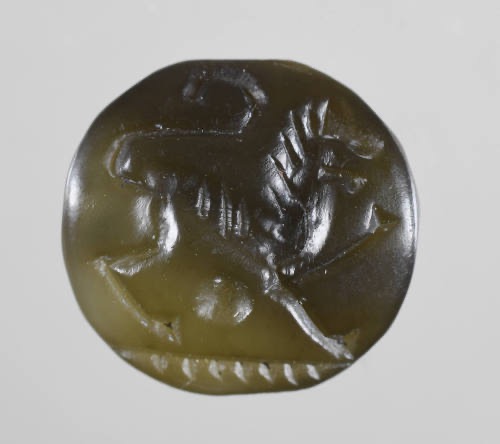
In last month’s blog, I talked about a list of "Red Flag Names" produced by the Art Looting Investigation Unit in response to Nazi theft of cultural property. The truth is, all collecting areas have red flag names that make provenance researchers uncomfortable. When it comes to antiquities from the Mediterranean, names don’t get much redder than those found on the infamous “Organigram.” Reportedly written by antiquities smuggler Pasquale Camera in the 1990s, the “Organigram” lays out the organization of antiquities looting and smuggling in Italy as understood by its author.
One of the names on the chart is Elie Borowski (1913–2003). Borowski was a controversial collector and dealer who had residences in Basel, Toronto, and Jerusalem. While, to my knowledge, no criminal charges were ever filed against Borowski related to antiquities trafficking, he was at least close enough to the action to be named in the “Organigram”. In 1992, Borowski and his wife Batya, founded the Bible Lands Museum in Jerusalem as a showcase for Borowski’s collection. When questioned by press at the time of the museum’s opening about the origin of the collection, Batya is quoted as saying, “It’s stolen. But we didn’t steal it."
Last year, the Carlos completed the purchase of a Greek serpentine gem (2024.5.1) that dates from the late seventh to early sixth century BCE. The gem was in the possession of Elie Borowski at the time of his death and was sold by the Borowski family to a private collector in 2011. For some, the gem will forever be tainted by its association with Borowski. However, if we look past Borowski’s name, we find that the gem has an extensive publication and provenance history. The earliest publication found thus far is Sotheby’s London sale catalogue for the estate of Richard M. Dawkins in 1957. Dawkins (1871–1955) was the director of the British School at Athens from 1906 to 1913. After serving as an intelligence officer with the Royal Navy in Crete during World War I, he was a professor at the University of Oxford. The gem was then published twice by noted scholar Sir John Boardman: first in 1963 and again in 1970, when the gem was in the collection of Hungarian writer Joseph Bard (1892–1975).
Given the published provenance before the gem entered Borowski’s collection, the Carlos felt this was an acquisition worth pursuing. As part of the Carlos’ Cultural Cooperation agreement signed with Greece in 2024, we vet any acquisition or loan with the Ministry of Culture. To date, no red flags have been raised about the gem’s provenance. While nothing in life—or in antiquities—is guaranteed, we can truly say we have done our due diligence with this acquisition. We are also honored to be able to continue our positive collaboration with the Greek Ministry of Culture.




